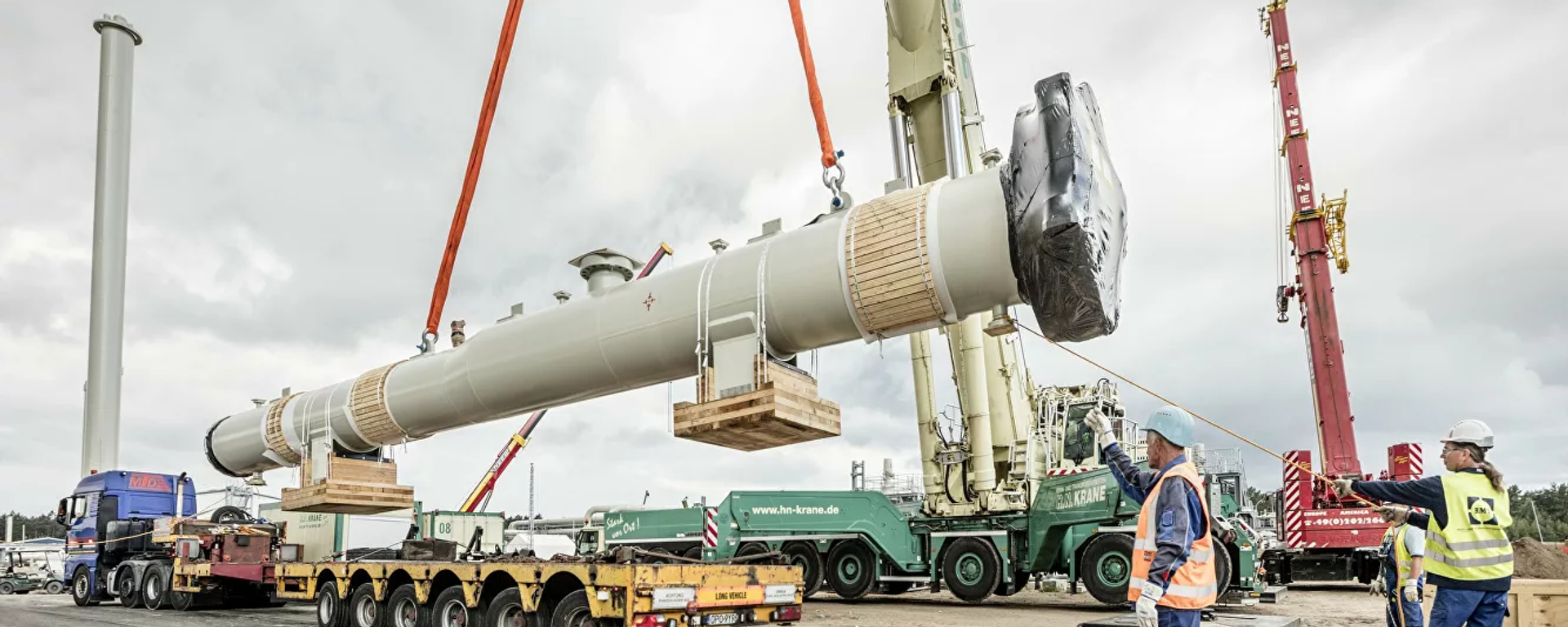https://sputnikglobe.com/20210915/why-gas-prices-break-records-in-europe-and-why-countries-cant-stop-their-growth-1089096842.html
Why are Gas Prices Breaking Records in Europe and Why Can't Countries Stop Their Growth?
Why are Gas Prices Breaking Records in Europe and Why Can't Countries Stop Their Growth?
Sputnik International
Why Gas Prices Break Records in Europe and Why Countries Can't Stop Their Growth?
2021-09-15T13:42+0000
2021-09-15T13:42+0000
2021-09-15T13:48+0000
europe
https://cdn1.img.sputnikglobe.com/img/07e5/09/0f/1089098007_0:86:3077:1817_1920x0_80_0_0_24846d5743f4dbfed94d8321d90ab72a.jpg
The cost of natural gas continues to rise on the European market, prompting a spike in energy prices and a regulatory response in some countries to halt the jump. On 15 September 2021, a 1,000 cubic metres of natural gas cost $950 – a price not seen since 2018, when extremely cold weather prompted spot price charts to reach $943.Several factors have contributed to the ongoing spike in prices: high demand due to cold weather, underfilled gas storages in Europe, and diversion of liquefied natural gas supplies.Right now, only around 70% of overall capacity of European gas storage is filled versus 93% in 2020. That is not enough for the continent to weather the winter. This situation has been caused by a double blow of reduced gas supplies from Russia due to an incident at the Urengoy Condensate Treatment Plant in August, and most of the world's LNG sailing towards Asia, where spot prices are currently even higher.How are Countries Dealing With Growing Prices and What Can Be Done to Stop or Reverse the Trend?The rapid growth of gas prices, both on the spot market and in forward contracts, has prompted some European governments to take matters into their own hands to prevent the market turbulence from influencing the population. Spain adopted legislation that sets a 4.4-percent limit on the indexation of energy prices for consumers in the third quarter. The law also limited the profits that energy companies can make during this period.The UK, in turn, ramped up its coal-based energy generation to divert demand from natural gas, but there are only two such plants left in the country and their capabilities are limited. The situation with coal plants is similar in other EU countries, who pledged to radically reduce carbon emissions by 2050 and have been gradually reducing dirty coal energy generation.If spot gas prices fall in Asia with decreasing demand, it would prompt many LNG suppliers to switch to Europe reducing the gas "hunger" there. Yet, right now they are too high for Europe to compete for LNG shipments.The launch of the Nord Stream 2 pipeline, completed on 10 September, will likely help European countries fill their gas reservoirs to appropriate levels, increasing supply and pushing down prices for people. This should stabilise the situation on the European gas market, the Kremlin suggested. However, its launch will not take place until the pipeline, whose construction had been opposed by some EU countries and the US, successfully passes certification.
https://sputnikglobe.com/20210913/gas-prices-in-europe-break-new-record-of-over-730-per-1000-cubic-meters-1089027525.html
https://sputnikglobe.com/20210915/nord-stream-2-launch-will-balance-gas-price-parameters-on-european-market-kremlin-says-1089090598.html
Sputnik International
feedback@sputniknews.com
+74956456601
MIA „Rossiya Segodnya“
2021
Tim Korso
https://cdn1.img.sputnikglobe.com/img/07e6/03/0d/1093831826_0:0:216:216_100x100_80_0_0_e3f43a960af0c6c99f7eb8ccbf5f812c.jpg
Tim Korso
https://cdn1.img.sputnikglobe.com/img/07e6/03/0d/1093831826_0:0:216:216_100x100_80_0_0_e3f43a960af0c6c99f7eb8ccbf5f812c.jpg
News
en_EN
Sputnik International
feedback@sputniknews.com
+74956456601
MIA „Rossiya Segodnya“
Sputnik International
feedback@sputniknews.com
+74956456601
MIA „Rossiya Segodnya“
Tim Korso
https://cdn1.img.sputnikglobe.com/img/07e6/03/0d/1093831826_0:0:216:216_100x100_80_0_0_e3f43a960af0c6c99f7eb8ccbf5f812c.jpg
gas prices spiking europe
gas prices spiking europe
Why are Gas Prices Breaking Records in Europe and Why Can't Countries Stop Their Growth?
13:42 GMT 15.09.2021 (Updated: 13:48 GMT 15.09.2021) A significant portion of European nations' coal-based plants have been slashed or closed as part of an EU policy to achieve zero carbon emissions in energy generation by the middle of the century.
The cost of natural gas continues to rise on the European market, prompting a spike in energy prices and a regulatory response in some countries to halt the jump. On 15 September 2021, a 1,000 cubic metres of natural gas cost $950 – a price not seen since 2018, when extremely cold weather prompted spot price charts to reach $943.
Several factors have contributed to the ongoing spike in prices: high demand due to cold weather, underfilled gas storages in Europe, and diversion of liquefied natural gas supplies.

13 September 2021, 09:39 GMT
Right now, only around 70% of overall capacity of European gas storage is filled versus 93% in 2020. That is not enough for the continent to weather the winter. This situation has been caused by a double blow of
reduced gas supplies from Russia due to an incident at the Urengoy Condensate Treatment Plant in August, and most of the world's LNG sailing towards Asia, where spot prices are currently even higher.
How are Countries Dealing With Growing Prices and What Can Be Done to Stop or Reverse the Trend?
The rapid growth of gas prices, both on the spot market and in forward contracts, has prompted some European governments to take matters into their own hands to prevent the market turbulence from influencing the population. Spain adopted legislation that sets a 4.4-percent limit on the indexation of energy prices for consumers in the third quarter. The law also limited the profits that energy companies can make during this period.
The UK, in turn, ramped up its coal-based energy generation to divert demand from natural gas, but there are only two such plants left in the country and their capabilities are limited. The situation with coal plants is similar in other EU countries, who pledged to radically reduce carbon emissions by 2050 and have been gradually reducing dirty coal energy generation.

15 September 2021, 10:18 GMT
If spot gas prices fall in Asia with decreasing demand, it would prompt many LNG suppliers to switch to Europe reducing the gas "hunger" there. Yet, right now they are too high for Europe to compete for LNG shipments.
The launch of the Nord Stream 2 pipeline, completed on 10 September, will likely help European countries fill their gas reservoirs to appropriate levels, increasing supply and pushing down prices for people. This should stabilise the situation on the European gas market, the Kremlin suggested. However, its launch will not take place until the pipeline, whose construction had been opposed by
some EU countries and the US, successfully
passes certification.



